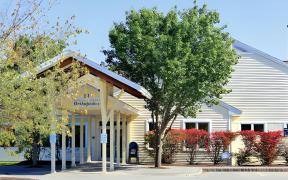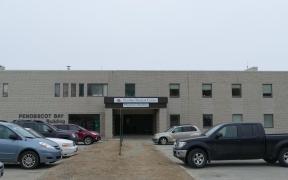Whether you play sports or garden at home, injuries can happen. You may sprain an ankle, or strain your back. Sprains and strains are common injuries that often recover with rest and self-care at home. Sometimes, people with sprains and strains need to see a healthcare provider for evaluation and treatment.
What are sprains and strains?
A sprain is an injury to the ligaments around a joint. It is caused by a joint being forced into an unnatural position, such as twisting an ankle. It may involve overextension or tearing a ligament while severely stressing a joint.
A strain happens when a muscle or tendon is injured. A strain or sprain can happen from repeated activities, or it may be caused by a single accident.
Symptoms of sprains and strains
With sprains and strains, there likely is to be pain, swelling and some loss of movement in the affected area.
-
Sprain symptoms also can include bruising. People may hear a popping sound in the injured joint.
-
Strain symptoms can include muscle spasms.
See a healthcare provider if you have trouble walking or moving the injured area without having a lot of pain. Also, if you have numbness in the affected area, call your provider.
Diagnosing a sprain or strain
To diagnose a sprain, usually a doctor will perform a physical exam to check for swelling and tenderness in the injured body part. The doctor may move joints and limbs into different positions to determine which ligament, tendon, or muscle has been injured.
-
X-rays can be used to rule out a broken bone or other bone injury as the source of pain.
-
Magnetic resonance imaging (MRI) also may be used to help diagnose the injury.
Sprains and strains can vary in intensity and damage. Your provider may grade the injury on a scale of one to three, with one mild, two moderate and three the most severe. Your type of sprain or strain will help your provider determine the best treatment for a full recovery.
Treatment for sprains and strains
Treatment depends on the type of injury. Most often treatment for sprains and strains can be done at home. Self-care involves the RICE method, which stands for Rest, Ice, Compression, and Elevation.
Rest. Reduce your regular activities. Take weight off of the injured body part.
Ice. Use an ice pack on the injured area for 20 minutes, four to eight times a day. Take the ice off after 20 minutes to avoid cold injury.
Compression. Put even pressure on the injured area to help reduce swelling. You can use an elastic wrap, special boot, air cast, or splint depending on the type of injury.
Elevation. Put the injured area on a pillow, at a level above your heart, to help reduce swelling.
Other treatment may include over-the-counter or prescription drugs to help reduce pain and inflammation. If the pain and discomfort do not go away, further treatment may be required. Rehabilitation programs and physical therapy can often be helpful to restore strength and flexibility.
Surgery may be necessary for severe joint and muscle sprains and strains.
Preventing strains and sprains
There are some preventative measures that can be taken to try to prevent sprains and strains.
-
Wear protective footwear during physical activity that puts pressure on joints.
-
Make sure shoes fit properly, and offer support and protection.
-
Avoid high-heeled shoes.
-
Warm-up and stretch before physical activity.
-
Ask your doctor about strengthening exercises for your sport or physical activity.
-
Avoid sports/activities without proper training.
































